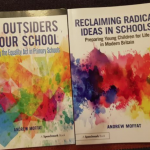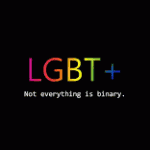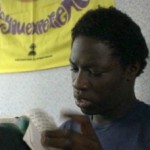Taken from the BBC website
“It’s impossible to say exactly what percentage of London’s population is gay or lesbian. A rough estimate made by the Gay to Z website on how many gay people live in London put the figure at approximately 5%, or 400,000 people in the Capital.
If we look at the number of social, political and cultural groups that work under the lesbian and gay banner in and around the city it is obvious that London is the gay capital of the UK.
Historically this is the case because for many young lesbian and gay people London’s size and liberal heritage meant that the city was seen as a refuge. Today, many towns and cities in the UK have flowering gay and lesbian communities but London still draws in a large majority.
In the eyes of the community, in many areas of everyday life today there is discrimination against lesbians and gays.
Issues exist such as discrimination in the armed forces and inequality in the age of consent for gay and heterosexual sex.
These issues galvanise what, in fact, is a hugely diverse range of men and women occupying all levels of society and working in every profession.
However, if the community has consolidated its position at the heart of London life it has not been without struggle and setback. On April 30th 2000 the Admiral Duncan pub was bombed. The pub was an openly and lively gay pub on Soho’s Old Compton Street. There had been two previous nail bombs planted in London.
The first of the three bombs exploded in Brixton, an area of London with a large African-Caribbean and African population, the second went off in Brick Lane – an area associated with the Bangladeshi community. Three people died in the Admiral Duncan pub bombing, Andrea Dykes, John Light and Nik Moore. To further compound the tragedy the three victims where close friends and Andrea Dykes, 27, was pregnant.
The bombing was an open and blatant attack on London’s gay community. This violent act shattered many lives and shook the confidence of lesbian and gay communities across London.
The tragedy was also to have a wider significance; many in the lesbian and gay communities saw it as brutal example of a wider social problem with homosexuality and the need to campaign harder for the removal of legal and social discrimination. General views around homosexuality had moved on dramatically in the last 50 years but there was still some way to go.
The repeal of the most obvious and discriminatory bars on homosexuality have taken place relatively recently. It is only since the introduction of the 1967 Sexual Offences Act that homosexuality has not been illegal. It’s important also to note that only male homosexual behaviour was covered in this act; there has never been a law against sex between women, so never one to repeal.
It was as recently as 1971 that the first openly gay social event was organised by the Gay Liberation Front here in London, at Kensington Town Hall. Today London is home to an economically and politically powerful gay population.
Lesbian and gay communities have historically existed as sub-cultures and hence our only record of these relationships is via court reports, scandals and documentation of executions.
London’s most high profile scandal was the trial of Oscar Wilde. Wilde’s passionate relationship with the son of the Marquis of Queensberry, Alfred Douglas, led Wilde to take a libel suit against the Marquis who publicly accused Wilde of “posing as a sondomite [sic]”.
Wilde’s libel failed and it was only a matter of time before the authorities prosecuted Wilde under the ‘Labouchere Amendment’ of the 1885 Criminal Law Act. Wilde heroically, if tragically, did not flee to avoid the expected criminal prosecution. The outcome is well known – Wilde defended his love for Lord Alfred Douglas (Bosie) and was imprisoned for two years at Reading Gaol. Although Wilde was born in Dublin and died in Paris his legacy on London’s gay history is of huge importance.
Before Wilde’s defence of homosexual love, London’s lesbian and gay relationships took place behind closed doors and on the fringes of the prostitution trade. London’s earliest ‘gay haunts’ where said to be in the streets around St James Park. ‘Molly Houses’ where the name given to brothels where cross dressing and gay sex took place. They were not uncommon in the eighteenth century. The chronicler of gay history in London Rictor Norton writes that many of London’s streets derive from the activities of prostitutes such as ‘Maiden Lane’ and ‘Grub Street ‘. Close to ‘Maiden Lane’ are ‘Cock’s Lane’ and ‘Lad Lane’ suggesting to Norton that male prostitution may have been prevalent there.
Today, London’s gay quarter is traditionally Soho and although it has its associations with prostitution, streets such as Old Compton Street with its array of gay bars, are a big attraction for Londoners of every colour, class and sexual persuasion who want to be at the centre of stylish London and have a great night out.
Although Soho is the social centre of London’s Lesbian and Gay community, a number of key areas around London are popular with lesbians and gay men. In the south of the city, Vauxhall and Clapham are popular whilst in the north of London, Earl’s Court, Hackney and Stoke Newington have strong lesbian and gay communities.”






